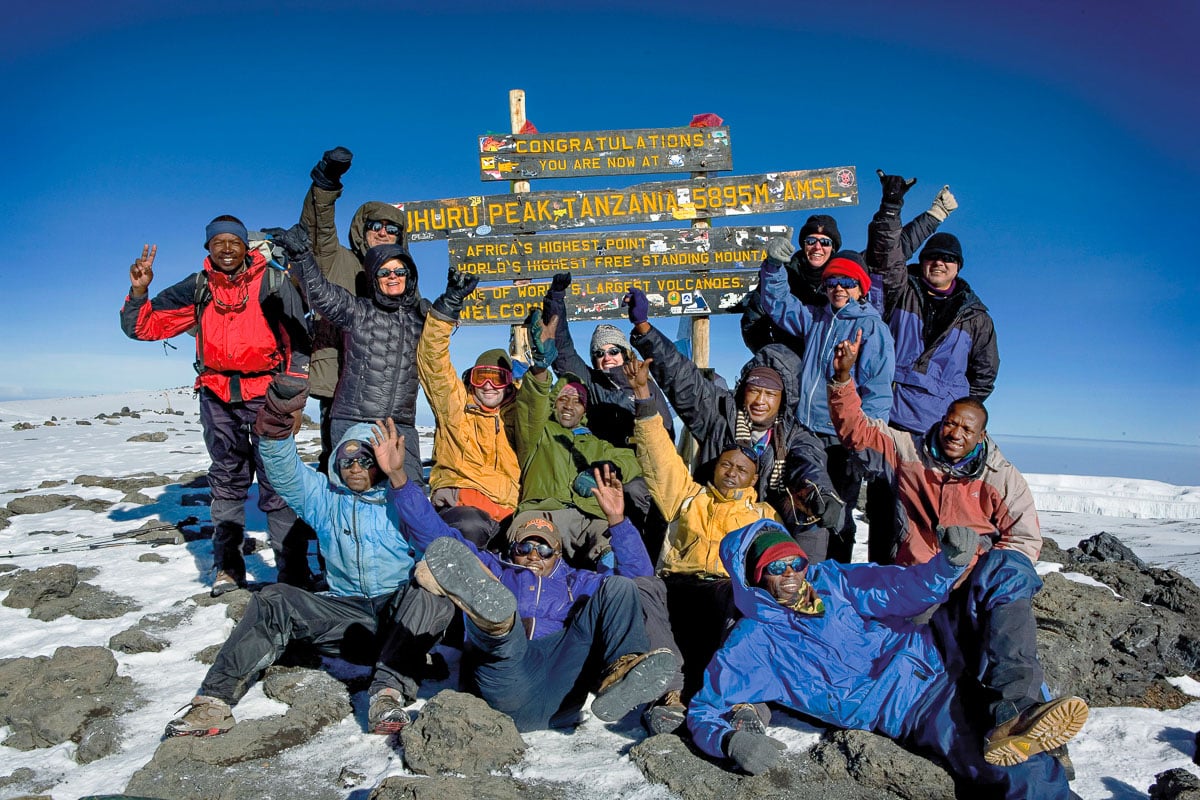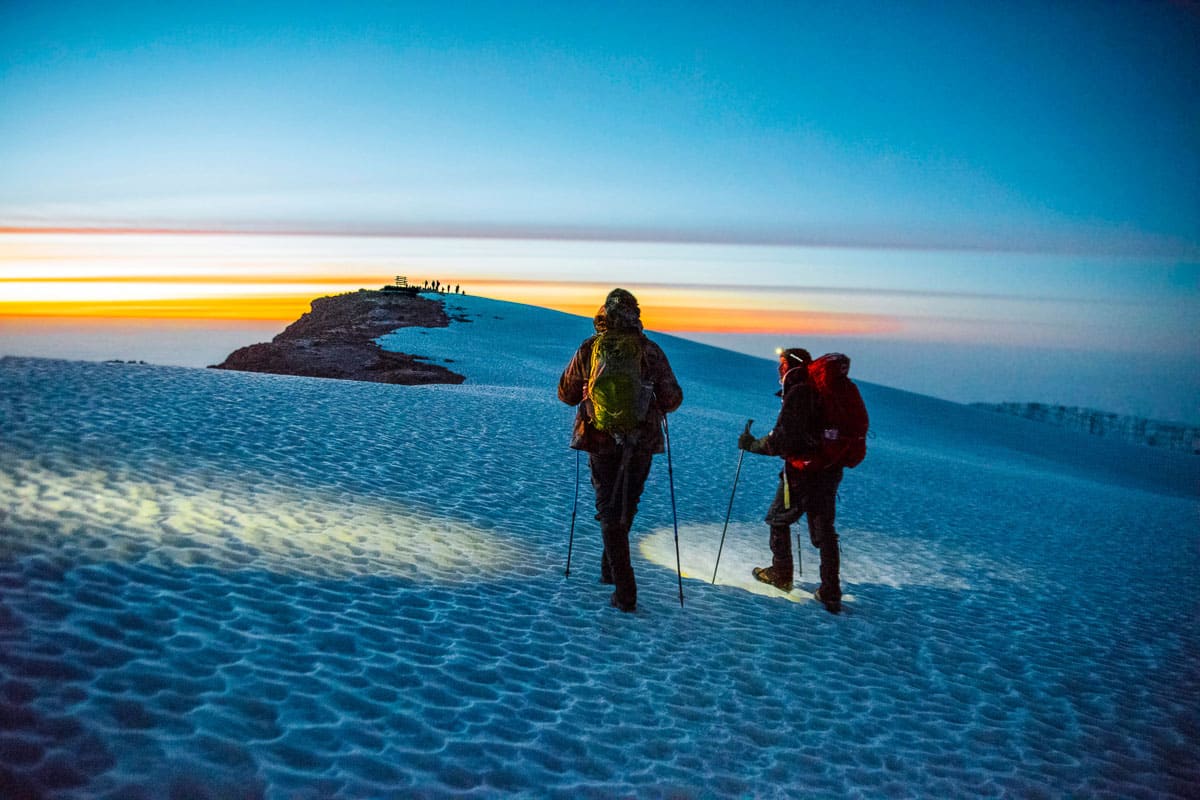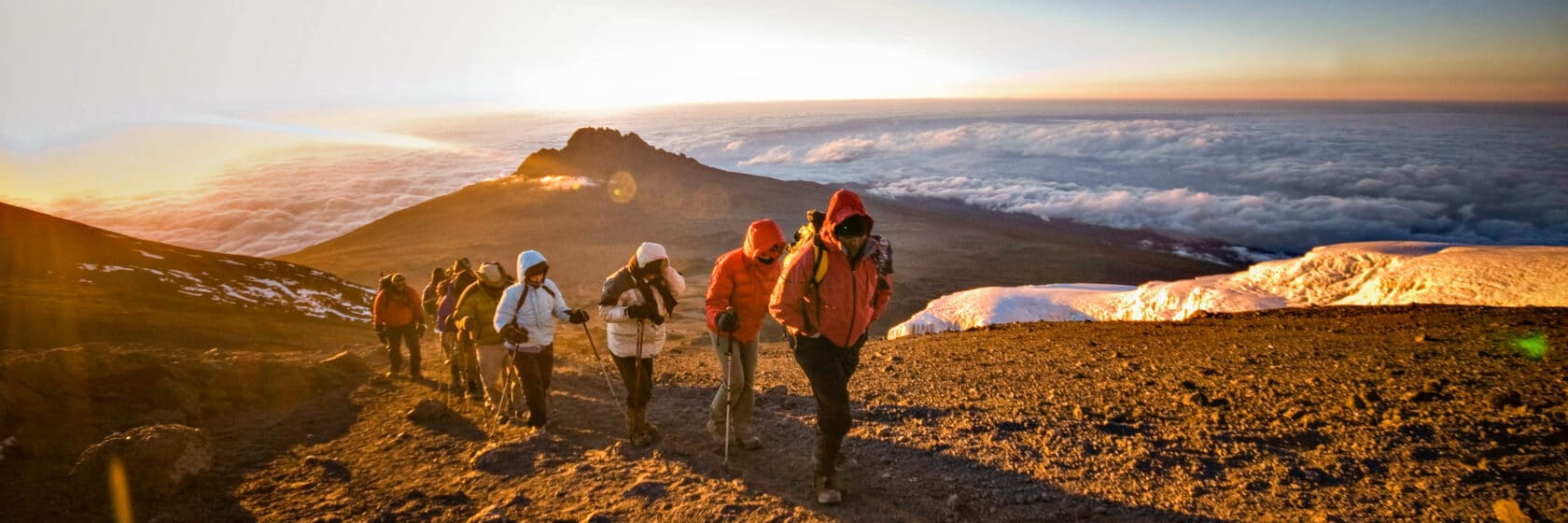
Kilimanjaro
How to Best Acclimatize When Climbing Kilimanjaro
Acclimatization on Kilimanjaro
We have designed our 9-day climb route with successful acclimatization in mind. The summit of Kilimanjaro, at 19,341 feet, is considered extreme high altitude. As you climb the mountain, the air becomes less compressed and contains fewer molecules of oxygen per breath. At 9,000 feet, there is 75% of the air pressure there is at sea level. At the summit of Kilimanjaro, there is half. Altitude Sickness (also called Mountain Sickness) is the name given to the physiological and symptomatic reactions of the body caused by rapid ascent to high altitude.
Some of the early symptoms include headache, nausea, fatigue, shortness of breath, and generally feeling bad. All climbers will likely experience mild early symptoms of Altitude Sickness. But given time (during which you are recommended to not overexert), your body adjusts to the decrease in oxygen by producing more oxygen-carrying red blood cells (hemoglobin) while your kidneys excrete the imbalance of alkali in your blood built up by the increased breathing rate. This process requires time and patience. It is vital to ascend to higher altitude slowly so your body has the time to acclimatize properly.
The two more life-threatening complications of Acute Mountain Sickness (AMS) are High Altitude Pulmonary Edema (HAPE, water accumulation in the lungs) and High Altitude Cerebral Edema (HACE, water accumulation in the brain). In both cases, immediate descent is mandatory.
The young and physically fit often assume that they need to worry less about Acute Mountain Sickness (AMS), but there is no correlation between age and physical fitness and successful acclimatization. Polepole. Swahili for “slowly” is the #1 key to proper acclimatization for everyone.
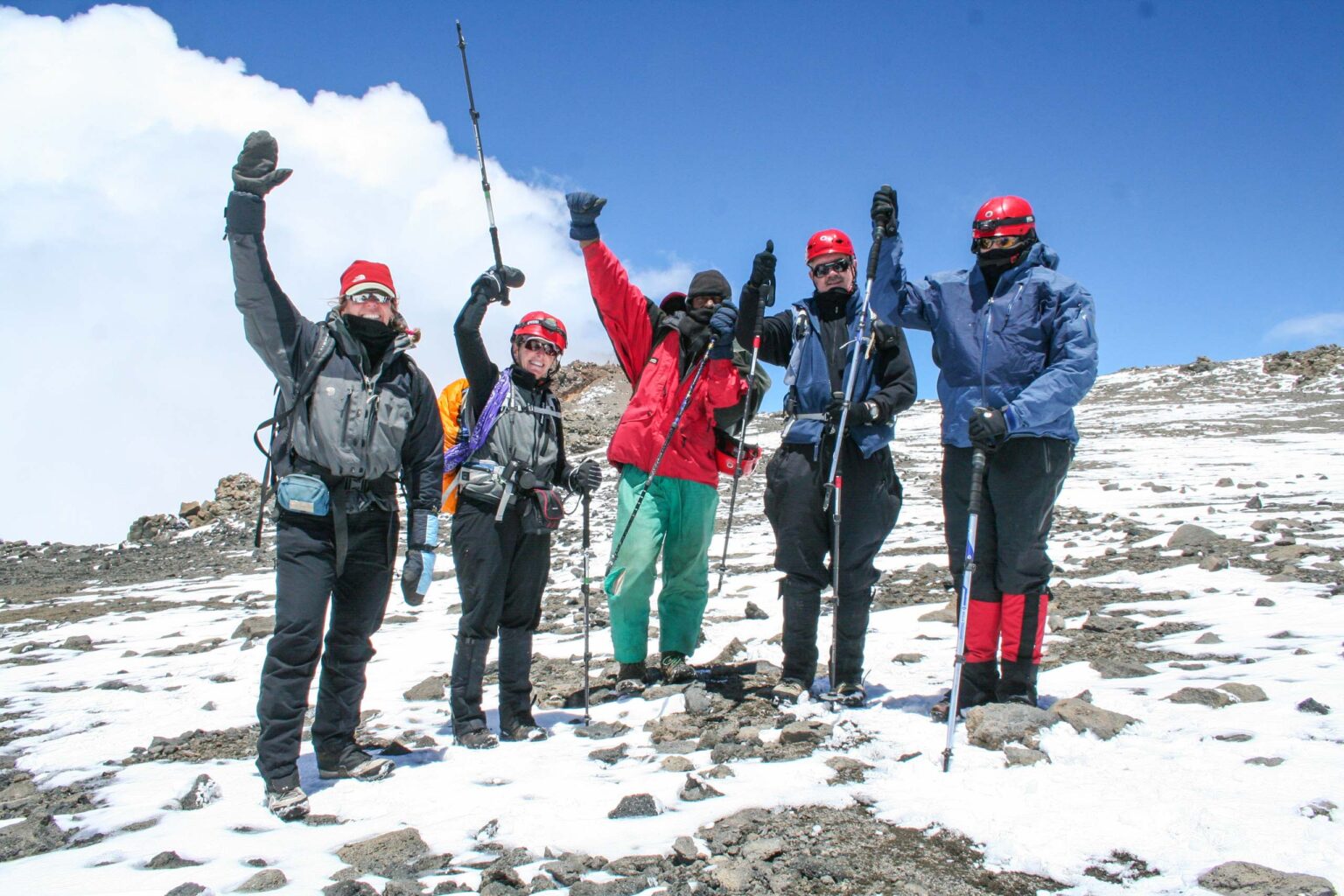
You will greatly improve your safety and enjoyment of the climb greatly if you:
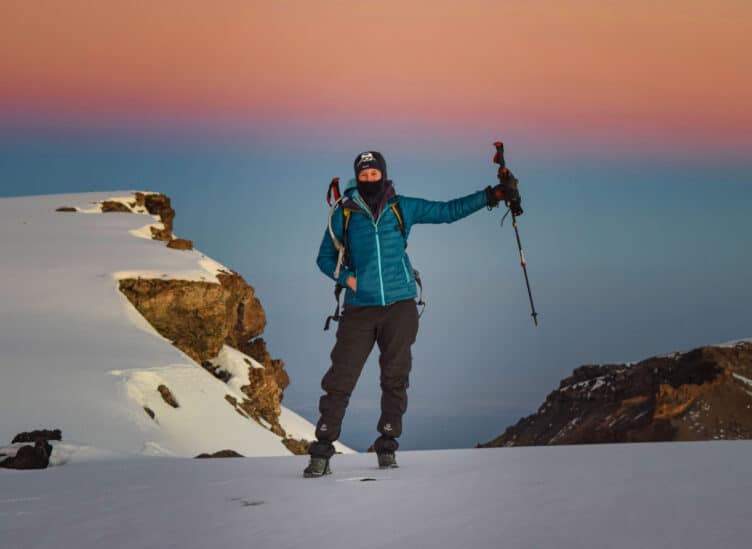
Advantages of Wilderness Travel’s Kilimanjaro Itinerary in Regard To Acclimatization
Prior to beginning our climb, we spend two extra nights on the slopes of Mt. Meru at 6,500′ (most other companies spend their pre-climb nights in Arusha which is only at 4,600′). These two nights are spent at a spectacular private camp in Arusha National Park from which we can enjoy a wonderfully scenic warm-up hike with views of both Mt. Meru and Kilimanjaro itself. These two days, in addition to being enjoyable, provide a huge jump-start to our body’s acclimatization process.
Once on the slopes of Kilimanjaro, our ascent is the most gradual (and the most scenic!) offered by any company. There is no underestimating the value of this steady and gradual approach. Our average ascent is only 1,835′ per day and the biggest ascent made in one day is only 2,840′. Once we reach 15,250′, we pause spending three nights between there and 16,000′ to solidify acclimatization before ascending to the crater rim. These two day of rest, interspersed with short, but steep day hikes help with acclimatization and gives us a chance to practice the “rest-step” hiking technique so useful at higher altitudes.
Our day climbing 2,840′ to the crater rim is a physically tough one, but in comparison to all of the routes that approach the summit via Barafu (and this is the majority) it stands out as much more reasonable. Not only do other routes have a very difficult 4,000’+ ascent on their summit day, but then must endure a 9,000’+ descent that very same day (and via the very same trail). On our summit day we climb only 840′ then descend on the route that others go up and back on. You will thus get to compare the two routes. Our climbers are always happy with our route selection after seeing the alternative option on their way out.
Learn More
Talk to an Expert
Our Africa Specialists know every detail about our Kilimanjaro trips. They will be happy to answer any questions and help make sure it’s the right adventure for you. Contact us to learn more or book your trip today!

